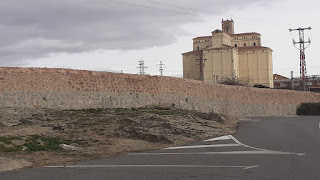LA MESÓN DE PAREDES rebosa gente. Locales repletos. Los paquis venden a todas horas. Sin límite. Los cafetines cafelatte están llenos de jóvenes turistas y locales autónomos trabajando online. El trapero yungbeef se pasea por la plaza recién lavada a chorro con mirada esquiva. Lo veo desde mi café mañanero. Voy alrernando, infiel al despertar. El joven trapero entra en una peluquería afro llena de gente, y dos mulatas, que escuchan música sentadas en la puerta con sus móviles a todo gas, ni se inmutan. Por supuesto no escuchan canciones del jovenbeef, ni de ctangana, las notas visibles de nuestro trap urbano; sino repiten una y otra vez los últimos ritmos de Badbunny, tal vez el nuevo rey del pop caribeño. Las sinergias relacionales parecen fluir mejor en el mundo latino que en el ibérico. Badbunny ya homenajeó a casi todos sus maestros en sus primeras barras, los cita en sus rimas y colaboran asiduamente, incluido el OMEGA de Santo Domingo, que sigue entre rejas. Los reiterados disstracks entre los chavales hispanos inhiben colaboraciones que generarían otro músculo más exportable de la música local. No se alientan entre sí. Aquí mejor romperse a hostias verbales que subir juntos. Los políticos igual. Nada en común. Ni programa ni actitud. Da grima.
Sigo caminando cuesta arriba y paso junto a los cines IDEAL, muy remozados y anodinos, viva el popcorn, donde está ya formada la fila junto al muro para la ración de comida diaria. Hay pan. La exhibición de los hambrientos frente a las parroquias es un clásico de la caridad cristiana madrileña. Predominan los hombres, de ropas marrones y con fardos. En la acera junto al túnel está sentado muy tranquilo un clásico del boxeo madrilleño, el Potro de Vallecas. Tuvo mejores días, pero sigue vivo, la droga no ha podido con él. Me alegra que venga a comer y buscarse la vida por el centro. En Sol las latinas con plumas sobre el trasero se mezclan con los ositos y otros muñecos peluche de la televisón, habitados todos por un trabajador de parque temático autónomo. LOS LÍMITES en la regulación y en la apolicación de las normativas es una las claves de la calidad de vida en Madrid. Llenamos estadios y calles en cada fiesta programada. Nos gusta el teatro, la zarzuela, las raves, el cine, los toros, las performances, el vermut, el yoga, las cañas, el flamenco, las copas, los vinos, las raciones, las tapas, y los platos combinados, a unos más que otros, los pepitos de ternera, las bravas y cada vez más el sushi, el poke y los tacos de carnitas. Modas que llegan. Sigo bajando por la calle Carretas que ya es LA NUEVA MONTERA. Todo nuevo eje peatonal es una fábrica de ciudad decorado. La noche es otra fauna, y las prostitutas afloran y la policía transita sin molestar a nadie.
LLOVERAS TWINS 190917 UNSTABLE INSTALLATION SERIES
The streets are full of people. Stores are full. The indians sell everything at all hours. The coffee shops are full of young tourists. The yungbeef walks through the square with a clumsy look. I see him enter the afro hairdresser from my morning coffee table. The mulatto girls who listen to music sitting at the door with their mobile phones at full throttle are immuted. Of course they do not listen to his latess songs, or tanganas, our local heroes of the urban trap, but repeat again and again the last rhythms by BadBunny, perhaps the new king of hispanic pop. Relational synergies seem to flow better in the Latin world than in the Iberian one. Bunny has already paid tribute to almost all of his teachers, he quotes them and they all collaborate, including the classic dominican omega,el fuerte de santo somingo, which is still behind bars. Repeated diss tracks inhibit collaborations that would generate another more synergistic muscle in their music carrers. Here the key is better to break the rival than to climb together. The politicians alike. Nothing in common. Neither program nor attitude. I continue walking uphill and next to the ideal cinemas, very renovated and bland, popcorn kingdom, the line is already formed next to the wall for the daily food ration. The display of the hungry in front of their parishes is a classic of the Christian charity of Madrid. Men predominate, in brown clothes and bales. On the sidewalk today a boxing classic from Madrid, el potro de Valllecas, poli diaz sits very calmly. He had better days but he is still alive, the drugs have not been able to wash him away. I'm glad he comes to eat and look for some streetlife in the city center. Down in sol, the Latin women with feathers on their buns are mixed with the bears and other dolls from tv shows, all of them inhabited by an autonomous theme park worker. Non-regulation is one of the keys to the quality of life in Madrid. We fill stadiums and streets at each scheduled party. We like the theater, the zarzuela, the raves, the movies, the bullfights, the performances, the vermouth, the yoga, the reeds, the flamenco, the glasses, the wines, the portions, the tapas, and the dishes combined,some more than others, veal in breas, bravas and every time we eat more sushi, poke and tacos. I keep going down carretas that is already the new montera. Every new pedestrian street makes the city a new scenography and a new play. The night is inhabited by another fauna. Prostitutes emerge and the police travels without disturbing anyone. We don't like to be told where to go or what to do, we are voracious and we take everything at reach.




















 2
2




